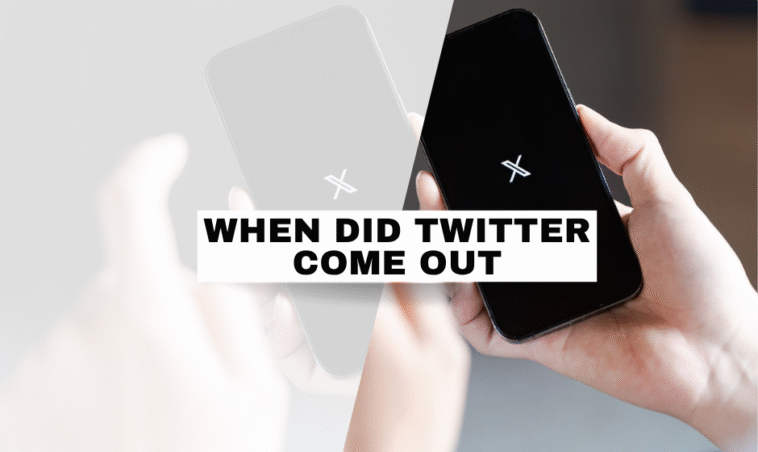The question “when did Twitter come out” may seem simple, but it opens the door to understanding one of the most influential platforms in internet history. Launched in 2006, Twitter has since evolved into a global communication tool with far-reaching social, cultural, and political implications.
Whether you’re a casual user, a business, or a digital historian, knowing when did x come out twitter helps frame how social media has reshaped communication since the mid-2000s.
The Official Launch: When Did Twitter Come Out?
The Twitter Launch Date and Early Origins
Twitter officially launched to the public on July 15, 2006. Initially developed under the code name “twttr,” the project began as a side initiative at Odeo, a podcasting company. The platform was publicly introduced at the South by Southwest (SXSW) festival in 2007, a pivotal moment that propelled Twitter into mainstream attention.
Early Milestones After Launch
Shortly after Twitter came out, it rapidly grew in user base. The simplicity of sending 140-character updates—now known as tweets—was novel. By 2008, celebrities, news organizations, and tech influencers were embracing Twitter as a new form of real-time broadcasting.
The Founders Behind Twitter’s Creation
Who Founded Twitter and Why?
The platform was founded by Jack Dorsey, Noah Glass, Biz Stone, and Evan Williams. Jack Dorsey is often credited with the original idea for Twitter: a short-form SMS-based communication platform that allowed users to share updates with friends and followers instantly.
Internal Disputes and Founders’ Exit
The history of Twitter’s founding is also marked by internal disagreements, particularly around credit and leadership. Noah Glass, though instrumental in naming and shaping Twitter, was later edged out of the company. Understanding these dynamics is essential when exploring when did x come out twitter and who was really behind it.
The Timeline of Twitter’s Growth (2006–2010)
From Startup to Silicon Valley Darling
When Twitter came out in 2006, its growth was modest. But by 2009, it became one of the top 10 most visited websites globally. Twitter saw massive traffic spikes during real-world events like Michael Jackson’s death in 2009.
Key Features Introduced During This Era
Between 2006 and 2010, Twitter introduced retweets, @replies, hashtags, and trending topics—features that turned it into a powerful news and engagement platform. These innovations made it far more than a microblog; they helped build Twitter’s unique identity.
Twitter’s Role in Politics and News (2011–2016)
Arab Spring and Political Movements
The answer to when did x come out twitter also aligns with global events like the Arab Spring, where the platform was used to organize protests and share live updates. By 2011, Twitter had solidified itself as a tool for real-time citizen journalism.
2016 U.S. Elections and Disinformation
During the 2016 election cycle, Twitter was at the center of political discourse and controversy, raising questions about bots, disinformation, and algorithmic influence—elements that continue to shape its evolution.
Monetization and Product Evolution (2013–2019)
Introduction of Ads and Business Tools
After going public in 2013, Twitter began focusing on monetization. Promoted tweets, Twitter ads, and brand partnerships became commonplace, adding commercial value to its platform.
Video, Live Streaming, and Moments
To compete with platforms like Facebook and Instagram, Twitter rolled out features such as Periscope (live streaming), Twitter Moments, and integrations for GIFs and videos—all of which reshaped user behavior.
Major Rebrands and Company Shifts (2020–2022)
Leadership Changes and Strategic Refocusing
From 2020 to 2022, Twitter saw multiple CEO changes. Jack Dorsey stepped down in 2021, replaced by Parag Agrawal, who aimed to decentralize the platform and focus on innovation.
Elon Musk’s Acquisition Interest Begins
By late 2022, Elon Musk expressed interest in acquiring Twitter, setting off a wave of speculation about the platform’s future and sparking debates about free speech and content moderation.
The Elon Musk Era and the X Rebrand (2022–2024)
Acquisition and Controversial Decisions
In October 2022, Elon Musk officially acquired Twitter. Major layoffs, controversial policy changes, and a push for subscription models like Twitter Blue followed. These moves drastically changed Twitter’s user and public perception.
Rebranding Twitter to X
One of the most dramatic changes post-acquisition was the rebranding of Twitter to “X” in 2023. While the core platform remained, Musk’s vision for X as an “everything app” has sparked debate about what Twitter once was and what it’s becoming.
How Twitter/X Continues to Evolve (2024–Present)
AI Integration and Subscription Features
Today, X (formerly Twitter) includes AI-driven tools, enhanced analytics, and premium features behind a paywall. These updates reflect a shift from an open platform to a more monetized experience.
Public Sentiment and User Migration
Although many still refer to the platform by its original name, the rebrand to X and Musk’s influence have led some users to explore alternatives like Mastodon, Bluesky, and Threads. Despite this, when did x come out twitter remains relevant to understanding X’s historical identity.
Conclusion: Why “When Did Twitter Come Out” Still Matters
Twitter came out in 2006, but its legacy continues to influence global communication. From shaping journalism to transforming politics, Twitter’s impact is undeniable.
Whether you’re a social media strategist, journalist, or curious user, understanding when did x come out twitter helps contextualize the rise and shifts of one of the most influential digital platforms in modern history.





GIPHY App Key not set. Please check settings